The Rev. Jeffrey Graham Jeffreys was a transient Vicar of Wickhamford with an interesting history
Rev. Jeffreys was only the Vicar of Wickhamford, and of Badsey with Aldington, for about two years covering the end of the Second World War and the first year or so of Peace. Unlike many of the Vicars who served in the village his career was not one solely devoted to the Church and his story is a very interesting one.
Beginnings
Jeffrey Graham Jeffreys was born on 30th April 1893 near Adelaide in the British colony of South Australia, the son of John Edwin and Amy Pauline Jeffreys. He was christened on 12th December that year at St Bartholomew’s Church, Norwood, a few miles from the centre of Adelaide. An older sister, Pauline Rita, had been christened there on 10th April 1892. Jeffrey attended St Peter’s College and the School of Mines. He joined the teaching staff at Barker College, Sydney and then transferred to the Ballarat Church of England Grammar School. He later went to teach at Melbourne Grammar School. His father continued to live in Adelaide and died there in 1934, being buried at All Souls Church, St Peters on 12th May.
Army Service
At the outbreak of War he tried to enlist but the Victorian Education authorities would not allow early enlistment and it was not until 21st August 1916 that he joined the Australian Imperial Force. At that time he was an assistant teacher at Melbourne Grammar School, South Yarra. He is listed in the Field Artillery Brigade amongst the February 1917 reinforcements due to sail to Europe. His father was noted as his next of kin, and Jeffrey was unmarried at the time. His father’s address was given as ‘Repton’, Second Avenue, Royston Park, Payneham, South Australia.
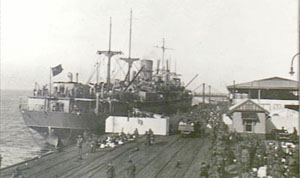
Gunner Jeffrey Graham Jeffreys (No 33396) was listed as Acting Sergeant at the time of his departure from Melbourne, aboard the HMAT ‘Shropshire’ on 11th May 1917. He was part of the (3rd or 6th) Field Artillery Brigade, which was posted to the Western Front, so his troopship probably went to a port in the South of France via the Suez Canal. (His Majesty’s Australian Transport A9 Shropshire weighed 8,130 tons, with an average cruise speed of 15 knots. It was owned by the Federal SN Co Ltd, London, and leased by the Commonwealth until 5 August 1917.) In France, he suffered from shell-shock and was sent to hospital in England for nine months. Upon release he joined the Australian Flying Corps and received his commission just before the Armistice. The Australian service records give his final rank at Lieutenant, but it is not clear if this was in the Army or the Air Force.
After being discharged he returned to Australia took a B.Sc. degree at the University of Melbourne and was appointed to the teaching staff at Scotch College, Melbourne. He subsequently left to return to England.
Life in England
The next mention of Jeffrey Graham Jeffreys is in 1921 when he came to England to teach chemistry at Westminster School. A Directory of the School from 1927 lists him as Assistant Master (Science) from September 1921 until April 1923. The Headmaster encouraged him to take a second degree at Christ Church, Oxford. He married Mary M. Blair in Kingston, Surrey in the second half of 1925. A Western Gazette article in 1927 states that he had recently married the only daughter of Dr Charles Blair, F.R.S.C., the senior ophthalmic surgeon of Richmond Hospital. A search of the birth records has failed to find any children of the couple. After University he took a teaching post at Radley School, just South of Oxford, but he had a desire to found his own school and after 18 months he resigned. The Aberdeen Journal of 26th March 1927 reported on him as being one of the judges at a Women’s Boat Race at Oxford. The University beat Cambridge, but because of the rules at that time the crews rowed the short course independently, against the clock.
Bryanston School
In Dorset he found two possible places for a school of his own, at Brownsea Island in Poole Harbour or at Bryanston, near Blandford. He chose the latter, and in 1928 he founded Bryanston School with himself as ‘Master’, with seven assistants and 23 boys aged between 13 and 16. He had raised £35,000 to buy the house and 450 acres of land from the 4th Lord Portland and chose the school crest (a rising sun) and the school motto Et Nova Et Vetera ("Both New and Old"). As a teaching philosophy he chose the Dalton Plan, originally developed by the American teacher Helen Parkhurst at Dalton High School in Massachusetts in the 1920s. It combined old and new approaches, hence the school motto. The idea was to tailor each child’s education individually, according to their needs, interests and abilities. The Western Gazette of 23rd September 1927 had a report that the school was due to open on 24th January 1928 and that it could accommodate 200 boys eventually. The curriculum was described as largely on the modern and scientific side, but that any boys showing an aptitude for classical studies would be able to persue these. The first Headmaster was to be ‘Mr J. Graham Jeffreys’ M.A., B.Sc., who until recently had been biology master at Radley College, Berkshire. He was said to have taken a prominent part in athletics in all their forms. The Western Gazette of 25th May 1928 reported on a visit by the Prince of Wales to the school, where Mr Jeffreys showed him over the premises. He was shown the school chapel, which had once been the billiard room and had his photograph taken on the terrace (see Appendix).
The Prince of Wales’ visit was reported in The Register in Adelaide on 28th July 1928 together with a detailed biography of Jeffrey Graham Jeffreys. The article mentioned that the Council of Governors at Bryanston School included the Lord Bishop of Liverpool, Sir Henry A. Miers (late Vice-Chancellor of Manchester University), Sir Harry Peat, K.B.E., the Bishop of Salisbury and Sir Charles Sherringham, F.R.S.
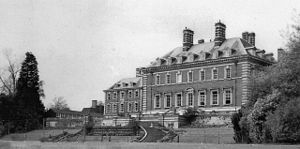
He is recorded as being awarded B.A. and M.A. degrees at Christ Church College, Oxford in 1929. By 1931, there was some friction between Jeffreys and the School Governors and he resigned. (After his departure, in the 1930s the school was used as a venue for meetings between the Boy Scouts and the Hitler Youth).
Ottershaw College
After leaving Bryanston, Jeffrey Graham Jeffreys moved to Surrey to found Ottershaw College. In 1932, Ottershaw College Ltd bought the mansion in Ottershaw Park to set up a boarding school for boys. The boys and masters lived and studied in the Mansion, then called "School House". At first there were only a few pupils but numbers rose to 123 by 1937. In that year government inspectors were fairly critical about the school and were not at all favourably impressed by the headmaster. Whilst at Ottershaw he was ordained a deacon in 1934 and was licensed to officiate in the Diocese of Guildford from 1934-39. For a short time the school was very successful, but eventually became insolvent in 1937. With the financial help of Mr Barry Cooper, father of one of the boys, the Chertsey Public School Ltd was formed and the college survived for two more years. Rev. J.G.Jeffreys, as he was now known, moved to Fulham as a preacher and a new head, Mr F.W.Manning, previously assistant master at the college since 1933, was appointed in April 1939. The College finally closed at the outbreak of war in 1939.
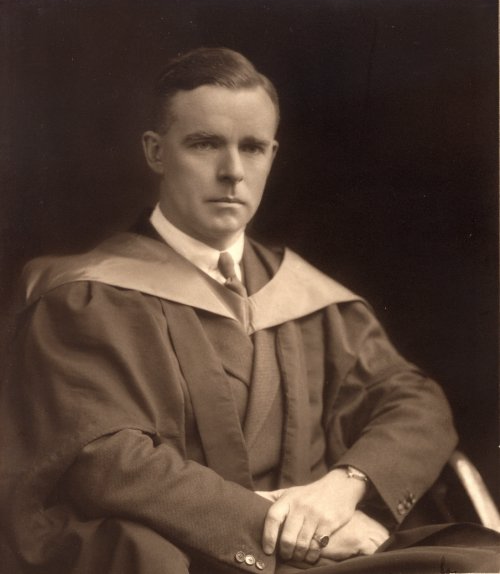
The Ottershaw College emblem was a gryphon (which may have been inspired by the pair of these beasts which surmounted the pillars of the South Lodge gates) and the college motto was Esto fidelis (“Ever faithful”). There were classrooms in The Bothy and some laboratories and classrooms between the Mansion and The Bothy. At some point four new houses for masters, new laboratories and a squash court were built, and four of the six tennis courts were converted into hard courts. A log cabin near the Bothy served as a tuck shop. The second master, Geoffrey Hartley, was mathematics teacher and in charge of the orchestra at the College. He was a talented bassoonist, composer, conductor and organiser of amateur music-making. Educated, as his father had been, at Harrow and Christ Church, Oxford, he taught music and mathematics at Bryanston School and then directed the music at Ottershaw College.
On 11th August 1934, the Gloucestershire Echo reported that the school was the first institution to pay permanent tribute to Gustav Holst. A memorial scholarship was to be awarded to a boy with particular ability on the violin. The article continued by saying that Holst was deeply interested in the musical side of the college, “which is run on the University Tutorial System, a method related to the Dalton Plan”. The school governing council consisted of the boys’ parents, who were elected at the general meetings.
In June 1938, the Bath Weekly Chronicle and Herald stated that the author Horace Annesley was guest speaker at Speech Day. The Headmaster said that “18 school certificates were gained with an average of four or five credits per candidate and eight had matriculation exemptions. This made between 70 and 80 per cent passes.”
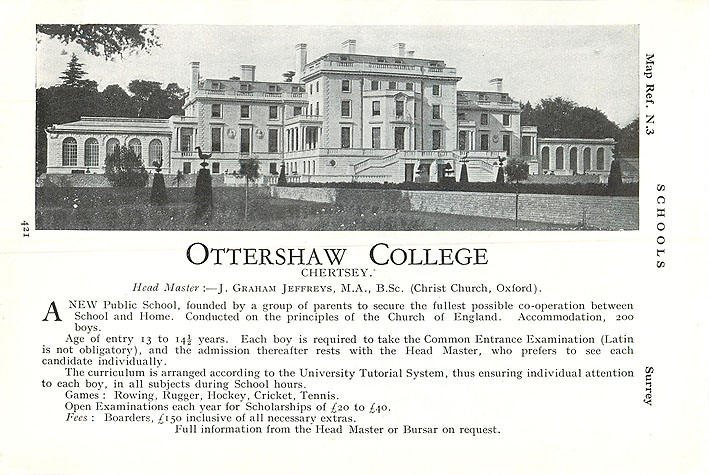
One interesting aspect of Rev. Jeffreys’ time at Ottershaw is that he took to flying again at the nearby airfield and on 20th July 1938 he was granted a certificate, at Brooklands Flying Club, Surrey, to fly the Tiger Moth/Gipsy Moth.
Second World War
After his initial time in Fulham, Rev. Jeffreys moved to North London to take over the parish of St Mary the Virgin, Tottenham. He was there throughout most of the War years serving the parish from 1939 to late 1945. His church suffered some damage from enemy action, particularly with a near miss from a V1 flying bomb. A report on the Dundee Courier of 29th June 1942 mentions that Rev. Jeffreys chaired and spoke at a conference on Sunday School work that was held in the city. The topic was “The Sunday School and Christian Citizenship”.
Vicar of Wickhamford
Rev. Jeffreys came to the Vale to take over the parishes of Badsey with Aldington and of Wickhamford on 27th October 1945. The two parishes had been in the hands of Rev. William Allsebrook since 1903 and he had been asked to stay on past retirement age during the War. During the latter part of his period of office, administration had deteriorated and the Parish Magazine was no longer published or the Parish Registers completed. With the coming of Jeffreys the Parish Register entries were restarted and he probably arranged for the reinstitution of the Parish Magazine. During his brief period at Wickhamford it is likely that discussions took place with George Lees-Milne about the restoration of the Gallery in the Church. This had been removed during extensive Church repairs at the beginning of the century and its reinstallation was completed in 1949. J. F. Taylor drew up a plan of the burials in the Churchyard in 1946, which hung in the room at the base of the Tower for many years. The climate in the Vale did not agree with Rev. Jeffreys’ constitution - the area was reputed to be poor for those with asthma type problems - and he left in 1947, his resignation taking effect on 8th October.
The Gloucestershire Echo reported on 11th November 1946 that Rev. Jeffreys had officiated at the Remembrance Day Service in Evesham, together with Rev. Richards of Astwood Bank. It was stated that he served as a chaplain in the ‘late War’
Later Life
After his time at Wickhamford he went to the Diocese of Southwark in 1947 and was appointed as Curate at Richmond, Surrey (1948-50). A report in the Western Morning News of 9th April 1948 says that he officiated at a cremation service at Mortlake on the 8th and that he was assistant curate at the old parish church, Richmond. He went to St Margaret’s, Oxford (1950-53) and then was made Vicar at Chesterton with Wendlebury, Oxfordshire (1953-59). Despite these positions, he was listed in the telephone directories from 1948 until 1958 as still living at 17 Lichfield Road, Richmond, Surrey.
The final reference to him in Crockford’s Clerical Directory was in the 1975-76 edition and this stated that he had been given permission to officiate in the Diocese of Old Sarum (Salisbury) in 1961.
He seems to have retired to the South Coast, living in Dorset, where his wife died in Weymouth in early 1969, aged 73. Jeffrey Graham Jeffreys died in Bournemouth, Dorset in 1977, aged 84.
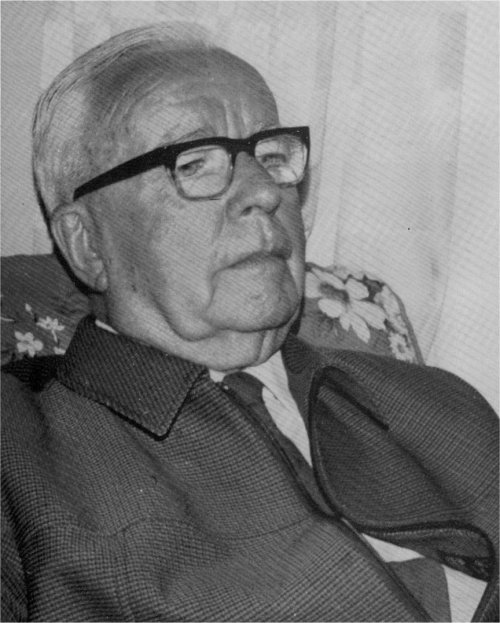
Appendix
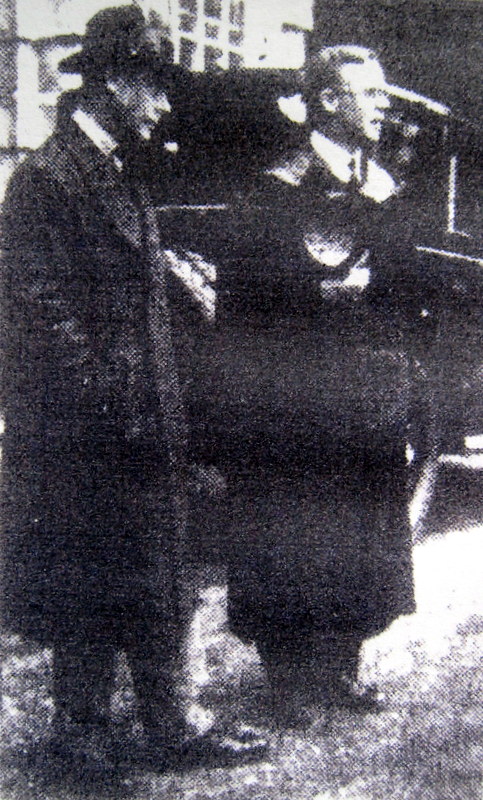
Acknowledgements
Some of the details of Ottershaw College are taken from the John Athersuch website on the Ottershaw Park Estate and the pictures of Jeffery Graham Jeffreys are from the same authors’ site, Owners and Occupiers of Ottershaw Park . Information on Bryanston School and the Dalton Plan and some details of J.G Jeffreys’ life are on Wikipedia pages.
Tom Locke, April 2013
